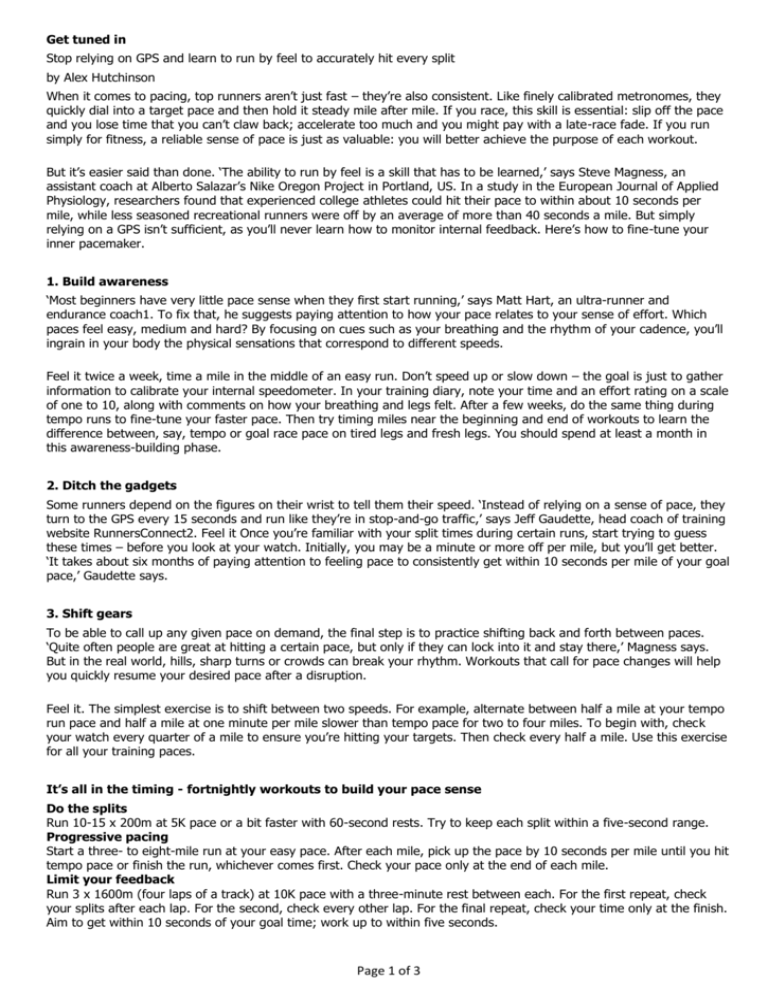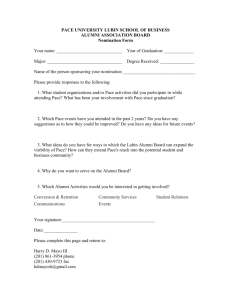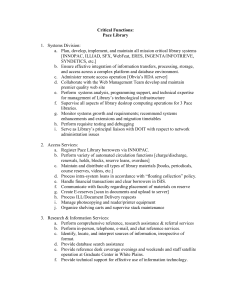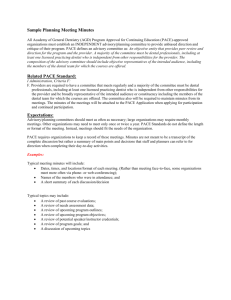21.10.2013 - agn.co.za
advertisement

Get tuned in Stop relying on GPS and learn to run by feel to accurately hit every split by Alex Hutchinson When it comes to pacing, top runners aren’t just fast – they’re also consistent. Like finely calibrated metronomes, they quickly dial into a target pace and then hold it steady mile after mile. If you race, this skill is essential: slip off the pace and you lose time that you can’t claw back; accelerate too much and you might pay with a late-race fade. If you run simply for fitness, a reliable sense of pace is just as valuable: you will better achieve the purpose of each workout. But it’s easier said than done. ‘The ability to run by feel is a skill that has to be learned,’ says Steve Magness, an assistant coach at Alberto Salazar’s Nike Oregon Project in Portland, US. In a study in the European Journal of Applied Physiology, researchers found that experienced college athletes could hit their pace to within about 10 seconds per mile, while less seasoned recreational runners were off by an average of more than 40 seconds a mile. But simply relying on a GPS isn’t sufficient, as you’ll never learn how to monitor internal feedback. Here’s how to fine-tune your inner pacemaker. 1. Build awareness ‘Most beginners have very little pace sense when they first start running,’ says Matt Hart, an ultra-runner and endurance coach1. To fix that, he suggests paying attention to how your pace relates to your sense of effort. Which paces feel easy, medium and hard? By focusing on cues such as your breathing and the rhythm of your cadence, you’ll ingrain in your body the physical sensations that correspond to different speeds. Feel it twice a week, time a mile in the middle of an easy run. Don’t speed up or slow down – the goal is just to gather information to calibrate your internal speedometer. In your training diary, note your time and an effort rating on a scale of one to 10, along with comments on how your breathing and legs felt. After a few weeks, do the same thing during tempo runs to fine-tune your faster pace. Then try timing miles near the beginning and end of workouts to learn the difference between, say, tempo or goal race pace on tired legs and fresh legs. You should spend at least a month in this awareness-building phase. 2. Ditch the gadgets Some runners depend on the figures on their wrist to tell them their speed. ‘Instead of relying on a sense of pace, they turn to the GPS every 15 seconds and run like they’re in stop-and-go traffic,’ says Jeff Gaudette, head coach of training website RunnersConnect2. Feel it Once you’re familiar with your split times during certain runs, start trying to guess these times – before you look at your watch. Initially, you may be a minute or more off per mile, but you’ll get better. ‘It takes about six months of paying attention to feeling pace to consistently get within 10 seconds per mile of your goal pace,’ Gaudette says. 3. Shift gears To be able to call up any given pace on demand, the final step is to practice shifting back and forth between paces. ‘Quite often people are great at hitting a certain pace, but only if they can lock into it and stay there,’ Magness says. But in the real world, hills, sharp turns or crowds can break your rhythm. Workouts that call for pace changes will help you quickly resume your desired pace after a disruption. Feel it. The simplest exercise is to shift between two speeds. For example, alternate between half a mile at your tempo run pace and half a mile at one minute per mile slower than tempo pace for two to four miles. To begin with, check your watch every quarter of a mile to ensure you’re hitting your targets. Then check every half a mile. Use this exercise for all your training paces. It’s all in the timing - fortnightly workouts to build your pace sense Do the splits Run 10-15 x 200m at 5K pace or a bit faster with 60-second rests. Try to keep each split within a five-second range. Progressive pacing Start a three- to eight-mile run at your easy pace. After each mile, pick up the pace by 10 seconds per mile until you hit tempo pace or finish the run, whichever comes first. Check your pace only at the end of each mile. Limit your feedback Run 3 x 1600m (four laps of a track) at 10K pace with a three-minute rest between each. For the first repeat, check your splits after each lap. For the second, check every other lap. For the final repeat, check your time only at the finish. Aim to get within 10 seconds of your goal time; work up to within five seconds. Page 1 of 3 The Marathon Weight-Loss Mystery Why marathon training doesn’t always help runners shed pounds by Pamela Nisevich Bede If you've ever trained for a marathon, you probably expected to lose weight. And why not? Long runs that last two, three or four hours burn a serious number of calories. But many runners step on the scales just before race day and discover to their horror that instead of dropping pounds, they've added some. Runners sometimes gain weight because they change their diets along with their mileage, or because other factors, such as hormonal fluctuations, come into play. And, occasionally, extra pounds are actually a sign things are going right. Here's why the numbers on the scales can go up during training and how to fuel yourself so you get to the start at an ideal weight. You're hungrier... Marathon training almost always requires more mileage, which boosts the number of calories you burn as well as your appetite. "Your body is trying to help fuel your increased activity," says Jenna Bell, a nutrition consultant and co-author of Energy to Burn (John Hiley & Sons, £9.99). "One of the ways it does this is by making you hungry." It's worse for women: researchers at the University of Massachusetts discovered this heightened sense of hunger is stronger in women than in men because exercise accelerates the production of appetite-regulating hormones, prompting them to eat more; men, it turns out, aren't as susceptible to these changes. If you've just finished a three-hour run, you need a recovery meal containing carbs and protein, such as a chicken and vegetable stir-fry with brown rice, to restock energy stores and speed muscle repair. After that, Leah Sabato, a nutrition expert specializing in obesity treatment and prevention, suggests asking if you're still hungry or thirsty, or simply giving in to cravings. "When your body truly needs food," says Sabato, "you'll experience fatigue, a rumbling stomach or hunger pangs that will accumulate over time." To keep cravings at bay and avoid unnecessary calories, remove temptations from your sight - if those fatty, salty crisps aren't sitting in plain view on the worktop, chances are they won't call your name. You can also try a diversion, such as taking a walk; a study published in 2009 in the journal Appetite found that taking a brisk 15-minute walk reduces chocolate cravings. Or try using your stopwatch as a tool: force yourself to wait 20 minutes before giving in. After that time has lapsed, the urge to eat is usually no longer as strong. You're overeating... You go for a 10-mile run, come home starving and inhale a bowl of cereal, a smoothie, eggs, bacon, toast and maybe a few well-earned biscuits. Oops, you've just eaten 1,200 calories - a few hundred more than you burned on the run. To limit overcompensation - that is, eating above and beyond what you need for recovery and thereby erasing the calorie deficit achieved during a workout - you need to make smarter food choices all day. Bell recommends eating mostly whole, minimally processed foods that are rich in carbohydrates, fibre and protein. The latter two take longer to digest, keeping hunger at bay and helping you avoid eating more than you should. Sabato also warns runners against falling into the seductive 'I deserve it' mindset. "Going for a long run doesn't give you license to eat a whole packet of biscuits," she says. When you eat can also help you avoid overcompensating. The goal is to time your meals so that you provide your body with enough energy to fuel runs and your recovery, but without overdoing it. If you eat a meal two to three hours before a workout, your body will be fuelled for your run and you won't feel hungry - this eliminates the need for a pre-workout snack, which adds extra calories. After a run, skip the recovery snack and instead sit down to a full meal within 30 minutes. You're gaining muscle - and retaining fluid Not all weight gain is bad. In some cases the pounds you may have put on can help you on race day. Months of training can reduce your body fat while adding muscle mass. Muscle is heavier than fat, which explains why the scales may have crept up even though you've probably lost a few inches around your waist and gained strength. Another reason for weight gain just before a race is fluid retention. Not only do runners typically drink more in the days leading up to a race, but they also eat more carbs. These carbohydrates attract water, leading to possible fluid Page 2 of 3 retention. This fluid (and the energy from stored carbs) will help ensure you're hydrated and fuelled on race day. Fluid gains often disappear in the days after a race, when you're no longer loading up on carbs or hydrating as diligently. Slim Fast Seven top tips on how to avoid the pounds and run your best race: Pay attention: Are you increasing your mileage but devouring a post-run burger because you 'deserve' it? Such behavior offsets the calories you burned logging miles. Fuel up...within reason: Eat before a long run but you should have enough stored fuel for an easy three-miler, so skip the snack and just run. Drink fluids: Optimal hydration can improve performance and reduce hunger. Hydrate before and after a workout and sip on calorie-free fluids throughout the day. Fibre up after a run: High-fibre foods are often low in calories but filling, so they're great for weight control. But they keep your digestive system moving, so avoid eating too much fibre right before you run. Choose carbs wisely: Don't fill up on carbs from processed grains and sweets. Instead, carb-load with filling, nutrient-dense whole grains such as brown rice and quinoa. Cut back: A study in Proceedings of the Nutrition Society found that when people decrease activity after hard training, they often don't reduce their food intake, setting them up for weight gain. Eat better: It’s okay to be mildly hungry before easy runs. Exercise temporarily reduces appetite, so your stomach will stop growling once you start running. Page 3 of 3







